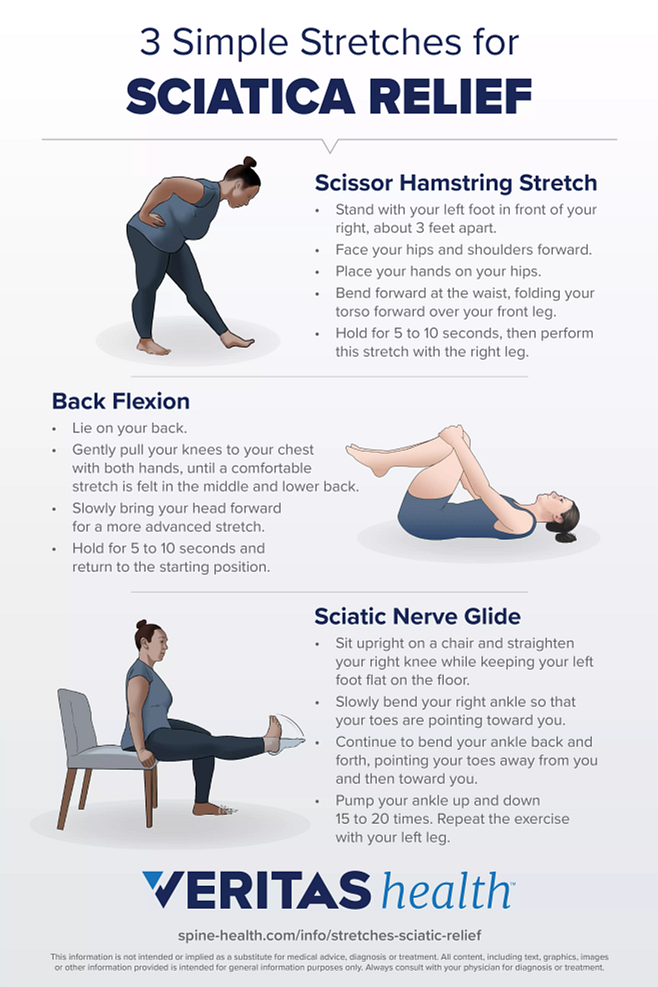How To Fix Sciatic Nerve Tension

Sharp, shooting pain down your leg? Sciatic nerve tension can be debilitating, but relief is possible. Immediate action can reduce pain and prevent long-term damage.
Sciatic nerve pain, often called sciatica, affects an estimated 40% of people at some point in their lives. Effective strategies, from simple stretches to professional interventions, can significantly alleviate symptoms and restore function. This article provides actionable steps you can take now.
Immediate Relief Strategies
Start with gentle movement. Avoid prolonged sitting or standing in one position. Change positions frequently to relieve pressure.
The McKenzie Method
This approach focuses on centralizing pain. Try lying face down and gently pressing up onto your elbows, keeping your hips on the floor. Repeat 10-15 times, several times a day, to encourage spinal extension.
Piriformis Stretch
Lie on your back with your knees bent. Cross the affected leg over the opposite knee and gently pull the uncrossed thigh toward your chest. Hold for 30 seconds and repeat 3-5 times.
Heat and Cold Therapy
Apply ice packs for the first 48-72 hours to reduce inflammation. After that, alternate between heat and ice, using heat to relax muscles and ice to numb pain. Limit applications to 15-20 minutes at a time.
Long-Term Management
Addressing the root cause is crucial for preventing recurrence. This often involves strengthening core muscles and improving posture.
Core Strengthening Exercises
A strong core supports the spine and reduces pressure on the sciatic nerve. Planks, bridges, and abdominal crunches are effective exercises. Start slowly and gradually increase intensity.
Posture Correction
Poor posture can exacerbate sciatic nerve tension. Focus on maintaining a neutral spine when sitting and standing. Use ergonomic supports, like a lumbar cushion, to promote proper alignment.
Regular Exercise
Low-impact activities like swimming, walking, and cycling can improve circulation and reduce inflammation. Avoid high-impact activities that can jar the spine.
When to Seek Professional Help
If your pain is severe, persistent, or accompanied by weakness, numbness, or bowel/bladder dysfunction, seek immediate medical attention. These symptoms could indicate a more serious condition, such as nerve compression or spinal stenosis.
Consult a physician, physical therapist, or chiropractor for a comprehensive evaluation and treatment plan. A physical therapist can provide targeted exercises and manual therapy. A chiropractor can address spinal misalignments.
Medical Interventions
In some cases, medical interventions may be necessary. These can include medication, injections, or surgery.
Medications
Over-the-counter pain relievers, such as ibuprofen and naproxen, can reduce pain and inflammation. Prescription medications, such as muscle relaxants and nerve pain medications, may be necessary for more severe cases.
Epidural Steroid Injections
These injections can reduce inflammation around the sciatic nerve. They are typically used when conservative treatments have failed.
Surgery
Surgery is rarely necessary but may be considered if other treatments are ineffective and nerve compression is severe. Common surgical procedures include discectomy and laminectomy.
The Role of Lifestyle Changes
Certain lifestyle modifications can also contribute to sciatic nerve pain relief and prevention.
Weight Management
Excess weight puts extra stress on the spine. Maintaining a healthy weight can reduce this stress and alleviate symptoms.
Proper Lifting Techniques
Always bend your knees and keep your back straight when lifting heavy objects. Avoid twisting while lifting.
Stress Management
Stress can worsen pain. Practice relaxation techniques, such as deep breathing and meditation, to manage stress levels.
New Developments and Research
Research continues to explore new and improved treatments for sciatica. Recent studies suggest that acupuncture and yoga may be effective in reducing pain and improving function.
Always consult with a healthcare professional before starting any new treatment regimen. Self-treating can potentially worsen the condition.
Don't delay seeking help if you're experiencing sciatic nerve pain. Taking proactive steps can significantly improve your quality of life. Schedule a consultation with a qualified healthcare provider to determine the best course of action for your specific situation. Early intervention is key to a faster recovery.


















